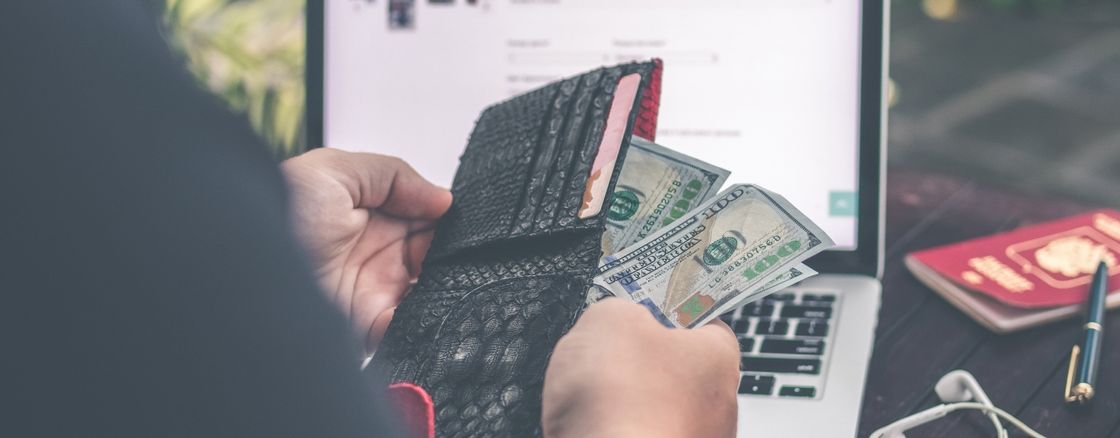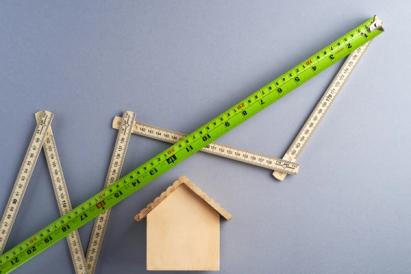Understanding Mortgage Prepaids
Written by:
Lauren Hargrave
Lauren Hargrave
Personal Finance Writer
Lauren Hargrave is a writer from San Diego who focuses on technology, finance, and healthcare. She worked in finance for seven years before pivoting to a career in writing, and now, instead of putting numbers into spreadsheets, she writes about them instead.
See full bio
Fact Checked by:
Dan Silva
Dan is the Vice President of Marketplace Lending at Own Up. Throughout his career, he has held executive leadership positions in the mortgage and banking industry.
See full bio

Once the home seller has accepted your purchase offer, it can feel like a sprint to closing. But amid scheduling vendors and gathering documents for your mortgage lender, you must pause and take stock of the costs associated with closing your home purchase, making sure you know how those costs are calculated. One set of costs that might not seem straightforward is mortgage prepaids.
In this post, we’ll explain mortgage prepaids, how they’re calculated, and how you can reduce their cost (if it makes sense to do so). Let’s get started.
What are Mortgage Prepaids?
Mortgage prepaids are payments you make for certain costs associated with owning a home that you pay for ahead of time. The prepaid expenses are typically:
- The cost of interest on your mortgage loan for the period between loan closing and your first mortgage payment
- Property tax payments
- Premiums for your homeowner’s insurance
- Initial escrow deposit
You typically pay these costs at closing; the money is deposited into an escrow account, and the lender distributes the payments to the appropriate vendors before the payments are due. Since these expenses are paid at closing, they are sometimes lumped with the other closing costs. But they are, in fact, different from your actual closing costs.
How are Mortgage Prepaids Different From Closing Costs?
Closing costs are fees that home buyers pay to their mortgage lenders and to the vendors that have completed inspections and reports or performed other services needed to close the home loan and purchase. Closing costs are, therefore, paid directly to the lender or vendor for services already rendered.
Mortgage prepaids, in contrast, are costs associated with ongoing homeownership that are paid to vendors ahead of time (like a homeowner’s insurance, for example) or put into escrow for future distribution (like real estate taxes or condominium fees). They are paid at closing but are separate from the transaction’s closing costs.
How are Mortgage Prepaids Calculated?
In this section, we’ll look at how the different mortgage prepaid costs are calculated, what factors affect their amounts, and where you can find the estimated mortgage prepaids for your transaction on your closing disclosure.
Mortgage Interest
Unless you close your mortgage loan on the first of the month, your mortgage lender collects prepaid interest charges for your loan at closing. You will be charged interest for the number of days that occur between the date you fund your loan and the end of the month. So, if you fund your loan on the 15th, you will be charged 15 days worth of interest at closing. These interest charges are placed in an escrow account and released to the lender with your first mortgage payment.
The prepaid interest charge is calculated per diem (i.e., the interest charge your loan generates each day). The lender multiplies the per diem cost by the number of days between the closing date and the date your first mortgage payment is due.
You can reduce the prepaid interest cost by delaying your loan closing (and thus home purchase) to closer to the first of the month. The drawback to doing this is that your first mortgage payment will be due sooner, which could be difficult timing from a cash flow perspective, depending on your financial situation.
However you decide to handle the mortgage prepaid interest payment, consider it within the greater context of all the payments you will have to make when and after you close your home purchase.
How do I Know How Much I Owe in Mortgage Prepaids?
You can find the prepaid interest charge for your transaction on page 2, section F of your Loan Estimate and on the Closing Disclosure form. This amount can change between when the loan estimate was issued and when you received your closing disclosure. Changes to your loan terms that could affect the prepaid interest you owe include your interest rate, closing date, loan amount, and loan term.
Property Tax Payments
Your property tax prepaid is calculated based on the lender’s estimate for how much property tax you will owe on your new home. Lenders typically ask borrowers to prepay for two months of property tax payments at closing and will place it in an escrow account for holding. If the borrower sets up property tax payments this way during closing, the lender will then put the monthly payments into the reserves so the account has a balance high enough for the lender to pay the entire tax bill when it’s due.
The lender then pays your property tax bill directly to the local government. Your prepaid property taxes are part of your initial escrow deposit (more on this later). Sometimes, you can ask the lender if you can pay your real estate taxes yourself, and exclude them from the total amount you pay to the lender every month.
Homeowner’s Insurance Premiums
Mortgage lenders usually require that their borrowers purchase a homeowner’s insurance policy. These insurance policies aim to guard the homeowner’s (and the lender’s) interest in the property if a fire, storm, or other event were to cause damage to or the total destruction of the home.
Lenders typically collect between 6 and 12 months of homeowner’s insurance premiums at closing and deposit that amount into the initial escrow account. When the monthly or annual payment is due, a lender uses it to pay the insurer for the homeowner’s insurance policy. Similarly to the real estate taxes, you can ask to handle your own homeowner insurance payments and exclude them from the amount due to your lender every month.
The national average for homeowner’s insurance annual premiums is $2,777. The rate you pay for your policy can vary greatly and is determined by several factors, including:
- The state where your home is located
- The likelihood of natural disasters or destructive storms in your area (e.g., tornados, hurricanes, earthquakes, and fires)
- The age and condition of your home
- Your zip code
- The population density in your area
- Your home’s proximity to a fire department
- Your credit score
- The claims history for the area
- The type of coverage you choose: you can purchase dwelling coverage (which significantly affects how much you pay for your insurance policy), personal liability coverage, and medical payments, but you must buy enough dwelling coverage to cover the total replacement cost of your home.
- The deductible you choose: the higher your deductible, the lower your premiums will be.
Your prepaid obligation for homeowner’s insurance premiums is located on page 2 of your Loan Estimate and Closing Disclosure form. You can lower your homeowner’s insurance premiums by shopping around and asking your realtor or the insurance agent what improvements you can make to your home to lower your payments.
Typical home repairs or additions that can help lower homeowner’s insurance premiums are:
- Adding storm shutters
- Replacing the roof
- Updating the heating system
- Updating the electrical system
- Making plumbing repairs
Initial Escrow Deposit
Your lender might require an initial escrow deposit to be paid at the closing of your mortgage loan. If needed, an initial escrow deposit is usually two months of homeowner’s insurance premiums (in addition to the 6–12 months of premiums collected at closing) and two months of property tax payments.
Your mortgage payments, once you start to pay them, may include charges for property taxes and homeowner’s insurance. The lender deposits the portion of your mortgage payment allocated to these charges into the escrow account and keeps the funds until the premiums and property tax bills are due. You can find the initial escrow deposit requirement for your transaction on page 2 of your Loan Estimate and Closing Disclosure form.
The Bottom Line
Mortgage prepaids are costs a homebuyer pays when they take out a mortgage loan to help them to purchase their home. These costs are in addition to closing costs, which are one-time costs paid to vendors that provide closing-related services. A mortgage advisor can help you develop the most appropriate strategy to reduce these additional home-buying costs.


